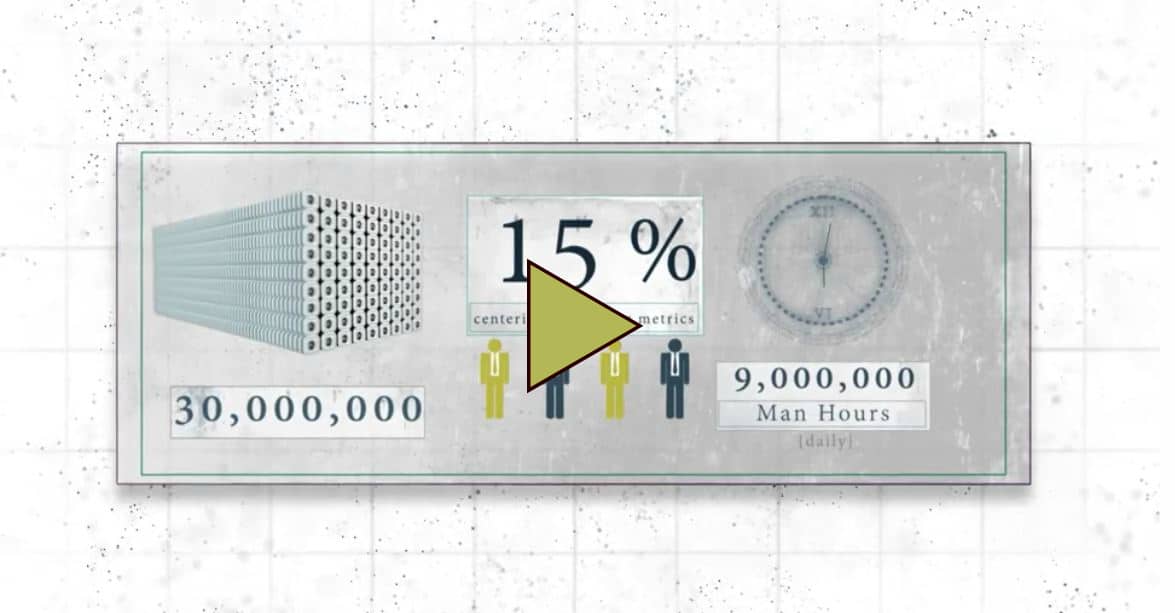For Michael Trufant, data visualization does two things: It presents data, and communicates a message. He’s been honing those visual messages for years, and he’s been a long-time advocate of data visualization.
“Spreadsheets are good for some things, but what do they really tell you?” he says. “As a leader, data is critically important. Ultimately, how do you get people to understand, so you can lead them to what you want them to see?”
Michael is a partner and coordinating producer at Launch Media, and he’s helping us spread the word about data visualization.
Here are four reasons leaders should embrace data visualization.
Data Visualization Is the Best Way to Communicate Data
When spreadsheets came along they were a handy way to look at data points, he says. But looking at spreadsheets isn’t very exciting, and it’s hard to see relationships between points of data. People learned how to read spreadsheets, but it takes a lot of work to identify why the numbers on them are important, Michael says.
Data visualization began to take off as technology advanced and made it easy to put together PowerPoint presentations and pie charts. It’s now much simpler to show the relationships between data points in a given report. “You can see the relationships and see what’s important,” he says. “The principles are the same, but it’s about the message as much as the data.”
It’s Versatile
Humans are visual communicators, and we remember things best when we learn through a story we can see. Communicating data using 3-D graphics, animation and virtual reality present your story in a way that will stick with your audience.
“You can make it cute, funny, serious or enlightening,” he says. “You can make things spin, transition, sing, bloom, anything — it’s like painting a canvas and spraying paint at it. You just have to get to the art of making data and communicating with it.”
It Clarifies Your Message
While the technology behind data visualization is full of “sizzle,” making those pretty pictures isn’t the most important part, Michael says — it’s understanding the underlying message and how best to present it. “When we talk about data visualization, it’s critical that we understand the metrics and data so we can present them in a way that builds success,” he says.
This is especially important if you’re telling an emotional story. For example, a client who is in health care may have a lot of data about caseloads, beds, cure rates and so on, but the challenge is using that data to create a visually appealing fundraising appeal for cancer treatment. “We can show people talking about cancer all day long, but the data needs to come across. When you work with the data, you get to the message,” he says.
It’s Useful at All Levels
The challenge for CEOs is sharing complex data with executive level leaders, managers and frontline workers so everyone understands the core message. Michael says data visualization is the easiest and simplest way to share that story in a way that works for everyone.
Chances are, data visualization is already used at your organization, whether it’s through red-green dashboards in a sales call center or the numbers on a cashier receipt. The challenge for leaders is avoiding getting wrapped up in the glitz, and embracing data visualization’s value across the organization. Beyond the bells and whistles, he says, data visualization is all about accomplishing a goal.
How could you use data visualization to share your message in 2017? If you’re looking for ideas, we’d love to help. Check out our project archive for inspiration or get in touch to schedule a free 30-minute consultation.
ABOUT LAUNCH MEDIA
Launch Media is an award-winning, full-service media production company. We strategically conceptualize, design, produce and distribute visual content – video, motion graphics, and digital media – that delivers an immediate impact and leaves a lasting impression. Ready to launch? Contact us









